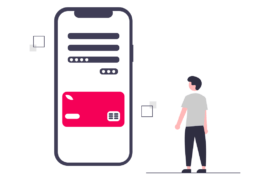Domain spoofing is a technique used by cybercriminals to gain unauthorized access to a user’s online account. In this article, you will learn all about domain spoofing and how to prevent it.
Programmatic advertising is forecast to be worth 725 billion US dollars by 2026, up from 418 billion in 2021, according to the latest estimates by Statisa.
With more and more money being funneled into programmatic advertising, instances of ad fraud have also been on the rise globally. Bad aplayers are taking advantage of advertisers and publishers, pocketing money that should be going back into the ad tech supply chain and devaluing it in the process.
Ad fraud can manifest in many ways but one of the most commonly seen ones is known as domain spoofing, in which a fraudster masquerades as a premium publisher. Let’s take a quick look at what is domain spoofing.
What is Domain Spoofing?
Domain spoofing is a devious form of phishing where an attacker uses a fake website or email domain that impersonates a well-known business or person in order to gain people’s trust and defraud them.
This is usually done by domain name squatting, which is the act of registering a domain that is similar to an existing domain in hopes of fooling users who mistype the web address.
The objective of a phishing attack is to acquire sensitive information from an unsuspecting victim, like logging into accounts or credit card information, to later use for financial gain or to install malware.
Now what is a domain, you may be asking?
What is Domain?
A domain is the unique name that identifies a website. It is the address that users type into their browser to visit a website. Every website has a domain name, and each domain name is unique. A domain name can be made up of letters and numbers, and it can be used to identify a website.
How Does Domain Spoofing Work?
Domain spoofing works in two ways.
First, by using malware and ad injections. An unsuspecting user may accidentally hit the wrong download button on a spurious website or download an application infected with malware, the malware then takes control of the browser and starts running its own malicious code.
It starts “injecting” ads into the users’ browser regardless of which website they are on, further, even websites that do not typically run ads can be injected to display them.
The other way domain spoofing works is by modifying ad tags. Ad exchanges give publishers an ad tag that contains a code to identify which domain the user is on.
Bad players can gain access, then delete the code and replace it with a static domain identifier, allowing them to impersonate anyone, advertisers may think that they’re buying top-tier inventory. But the ads will actually show up on substandard properties, such as a leaderboard on an obscure forum.
Types of Domain spoofing
1. Email Spoofing
Many people often wonder what is spoofed email as it is one of the most common types of domain spoofing.
Attackers use email to trick people into thinking that the message is from a legitimate and trusted sender, like a friend, business, or government agency.
These kinds of emails may contain a virus that can damage your computer or steal your information. Not only that, but it can redirect you to a malicious website without you knowing it, or trick you into giving away personal information.
2. Website Spoofing
In website spoofing, attackers register a domain that is spelled similarly to a legitimate domain. After that, they create a site that looks almost exactly the same. They might use this replcated website to send out spoofed emails that contain links to the fake site to lure victims.
Once users are on the spoofed site, they may be presented with downloads that could install malware on their computer or be asked to provide personal information.
Types of personal information they may ask for include login credentials or banking information.
Spoofed websites can pose a serious threat to businesses and individuals alike. Scammers can use these fake sites to commit ad fraud by submitting the false domain to an ad exchange. This tricks advertisers into bidding for space on the spoofed site instead of the legitimate site, costing the business money.
3. DNS Poisoning
DNS poisoning is another type of domain spoofing where hackers disguise themselves as another device, client, or user. In simpler words, DNS cache poisoning attacks happen when hackers change a domain name system (DNS) to a “spoofed” DNS. So when somebody visits a website, they end up on a different site than what they were expecting.
Who is Hurt by Domain Spoofing?
Basically everyone except the party perpetrating the fraud. Practices such as domain spoofing erode trust within the ad tech community.
Advertisers lose their money on fraudulent inventory and don’t get the returns they expected. In addition, their ads may also end up appearing in places (torrent sites, porn sites, etc) where it becomes a brand safety concern for them.
Once advertisers realize what’s happening with their advertising dollars, they may choose to stop dealing with the ad exchange involved, even though the latter did not purposely intend to cheat the advertiser.
However, the biggest loser in the entire setup is the publishers. In the case of ad injections, the publisher inventory is held hostage to fraudulent impressions, as a result when their campaigns fail to perform—advertisers are soon on their necks and in many cases blacklist them.
And with domain spoofing involving the modification of ad tags, fraudsters can undercut publishers by pretending to sell their inventory at throwaway prices. The money that was rightfully deserved by the publisher is snatched away.
What’s the Solution?
For a long time, domain spoofing-related ad fraud may have gone under the radar as a mere annoyance. But when the true scale of the problem was revealed with the methbot operation—where fraudsters were making upwards of $5 million every single day—things have gotten serious.
A whole new class of ad verification ad tech companies has now mushroomed that focus specifically on ensuring that ads appear in the place where they were intended to. These companies work with publishers, advertisers, and exchanges to monitor ad delivery and fill security gaps.
A lot of new companies are also focusing on how blockchain technology can be implemented to keep a transparent peer review on digital ad transitions and delivery, but the use of blockchain in ad tech is still relatively new and these companies are yet to prove their efficacy.
Ads.txt is the most promising candidate for fixing domain spoofing that is being quickly adopted by both publishers and exchanges, a verification system in which exchanges keep a text file on their server that lists which publishers they are allowed to represent, and more importantly, the publishers keep one listing the exchanges that are authorized to sell inventory on their behalf.
If widely adopted, this system based on human verification promises to make many traditional ad fraud techniques untenable.
5 Ways You Can Protect Yourself from Domain Spoofing
Verify the Source
If you receive a link in an email, take a moment to consider whether or not the email was expected. Oftentimes, unexpected requests or warnings are signs that someone is trying to scam you.
There are a few things that can help you determine whether an email is spoofed or not. For example, if there are any misplaced letters, spelling errors, or an incorrect domain name in the sender’s email address, these are all indicators that the email may not be legitimate.
Look for the Padlock
Another way you can prevent domain spoofing is by ensuring pad lock is not missing.
The absence of a lock icon (padlock) in the browser address bar indicates that the communication channel between the client browser and the server is not secure. A spoofed website is one that uses a false or fake identity in order to trick users into believing it is legitimate. Often padlock is missing from their website’s URL.
This means that the website is not secure and it could be a spoofed site.
SSL Certificate
SSL certificates are text files that act as a digital identifier for websites. They help in encrypting traffic to and from the website, and the certificate authority will verify if the applicant is allowed to use a specific domain name. Most legitimate websites will have an SSL certificate.
However, spoofed websites may also possess an SSL certificate. But that certitciate would be generated from the fake name of a legit website. So don’t let it fool you – make sure you check that the SSL certificate is registered under the legitimate name.
Bookmark the Websites
Keep all of your bookmarks stored in your browser, which can be used as reference for websites you visit frequently. This way, instead of having to type in or follow a link to the website, you can just access it by clicking on the bookmark. This ensures you’re away from spoofed domains by ensuring that you are always visiting the legitimate website.
SPF, DKIM, DMARK
Though there is no foolproof method to prevent coming across spoofed domains in email correspondence, companies can increased verification measures by using protocols like DMARC, DKIM, and SPF. However, since external parties are not bound by these protocols, they can still send false emails.
Final Words
Domain spoofing is an easy way for cyber criminals to take advantage of people. It is important to remember that you should never give out your personal information to people unless you are sure they are legitimate.
If you are ever unsure, you should always call the business directly and speak to a representative, rather than giving out any of your personal information to someone you aren’t positive is a real representative. Hope the blog helped you with the much-needed insights you were looking for domain spoofing.
Frequently Asked Questions – Domain Spoofing
Spoofed domains or Spoofing occurs when someone impersonates another person or entity in order to trick someone into believing they are who they say they are.
For example, a spoofed domain like a spoof website or a spoof email attack could involve an attacker sending an email that appears to be from a legitimate source, such as a bank or credit card company, in order to trick the recipient into providing sensitive information like passwords or credit card numbers.
First, they can register their domain with the Domain Name System Security Extensions (DNSSEC). This will add an extra layer of security to the domain, making it more difficult for scammers to spoof it.
Second, businesses can use email authentication methods such as SPF and DKIM. These methods help to verify that emails purporting to come from the business are actually from the business, and not from a scammer.
Finally, businesses can educate their employees and customers about the threat of domain spoofing. By raising awareness of the issue, businesses can help to protect themselves and their customers from being victimized by this type of scam.
The first step is to identify the source of the spam. If you know where the spam is coming from, you can take steps to block it.
You can also install a spam filter to screen out messages from known spam sources. Spam filters can sometimes block legitimate emails, so you’ll need to periodically check your spam folder to make sure nothing important has been caught.
Finally, you can report spam to the authorities. In the United States, you can report spam to the Federal Trade Commission at spam@uce.gov. Reporting spam can help to shut down the operations of persistent spammers.

Shubham is a digital marketer with rich experience working in the advertisement technology industry. He has vast experience in the programmatic industry, driving business strategy and scaling functions including but not limited to growth and marketing, Operations, process optimization, and Sales.







